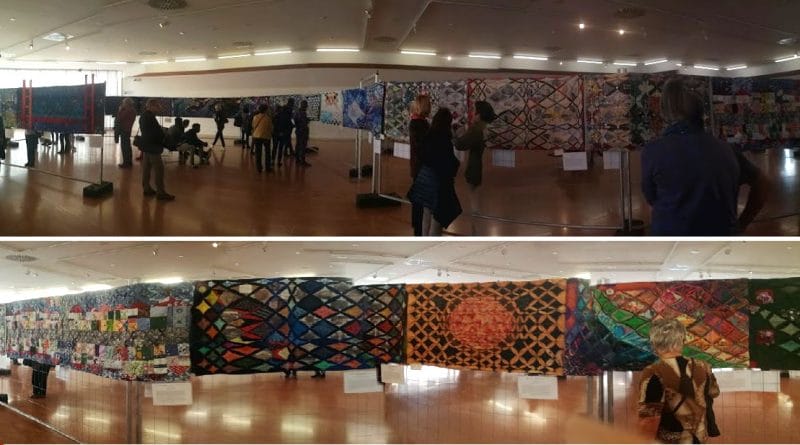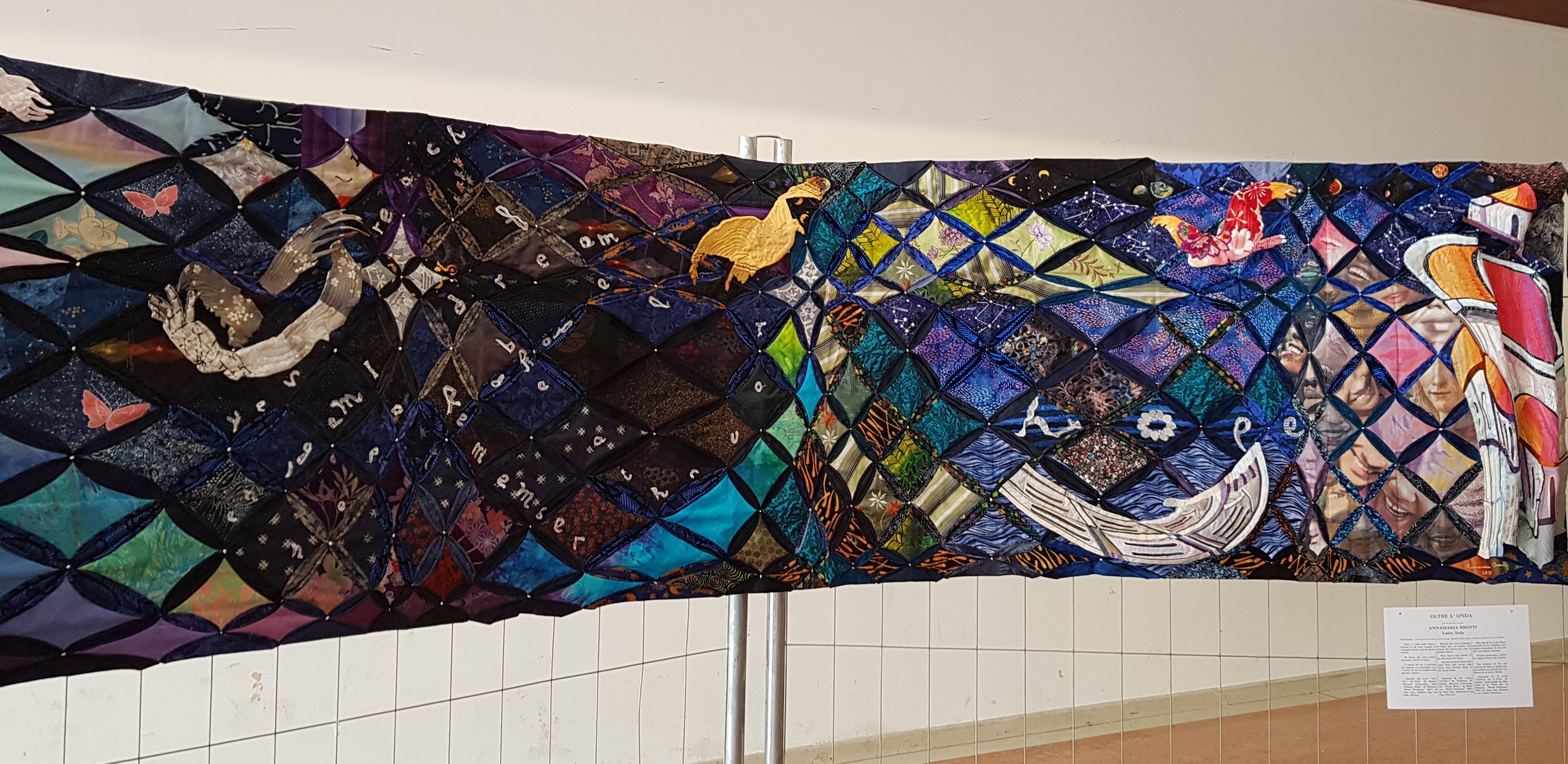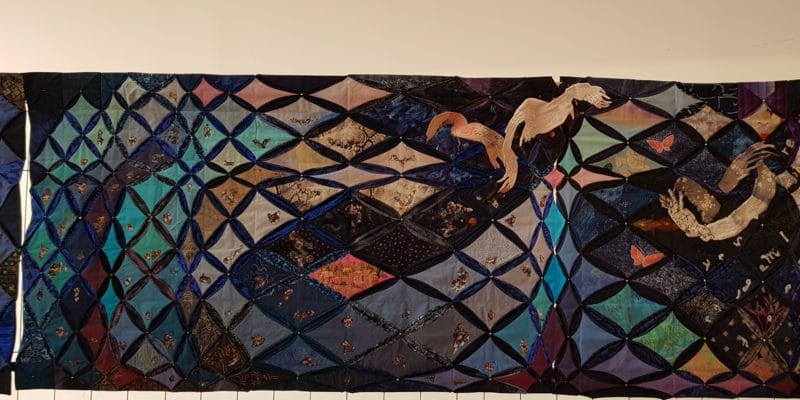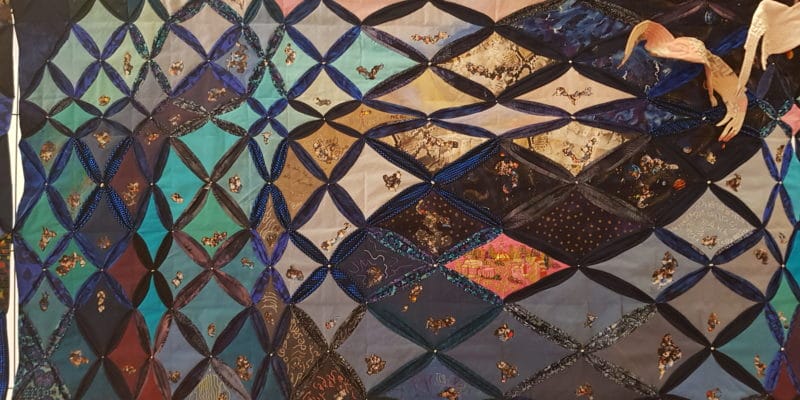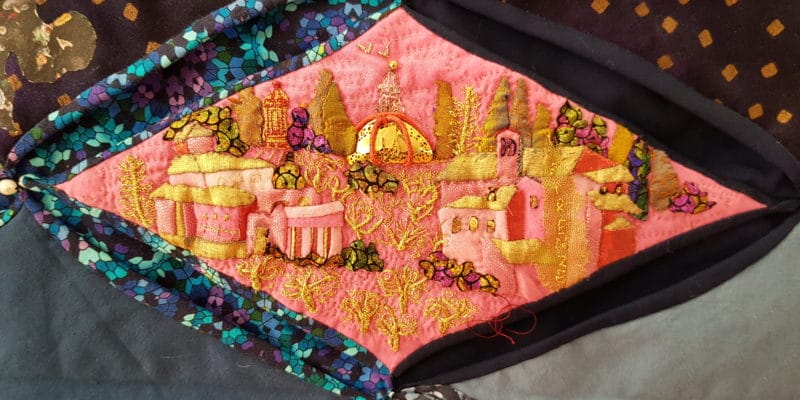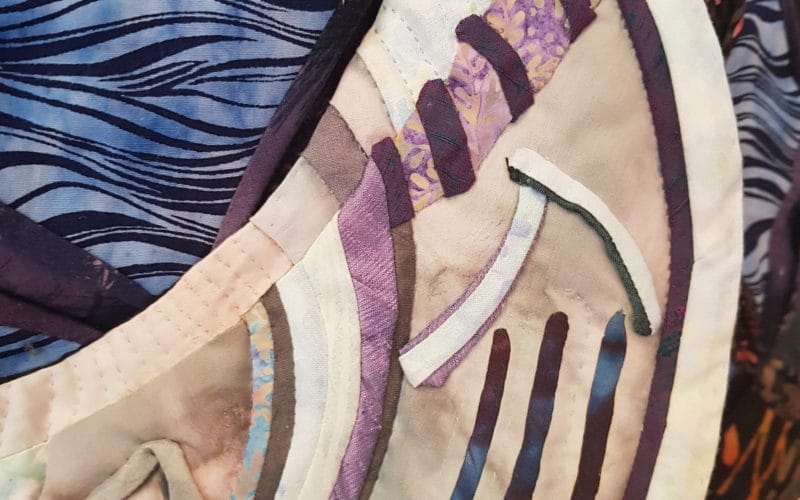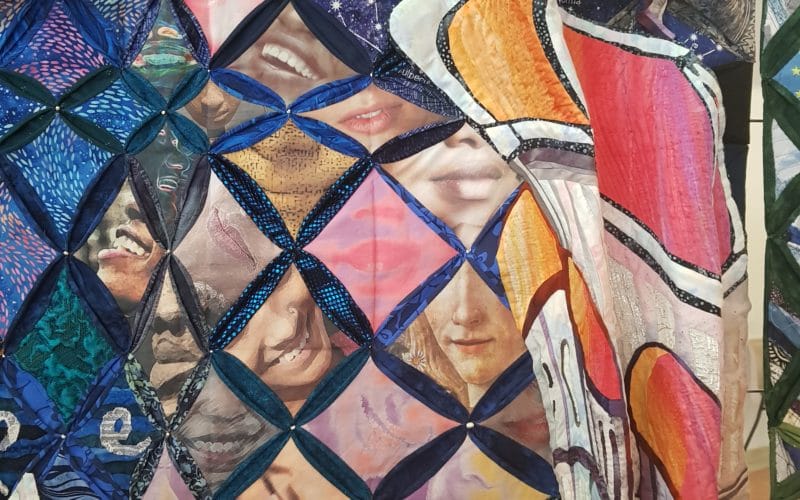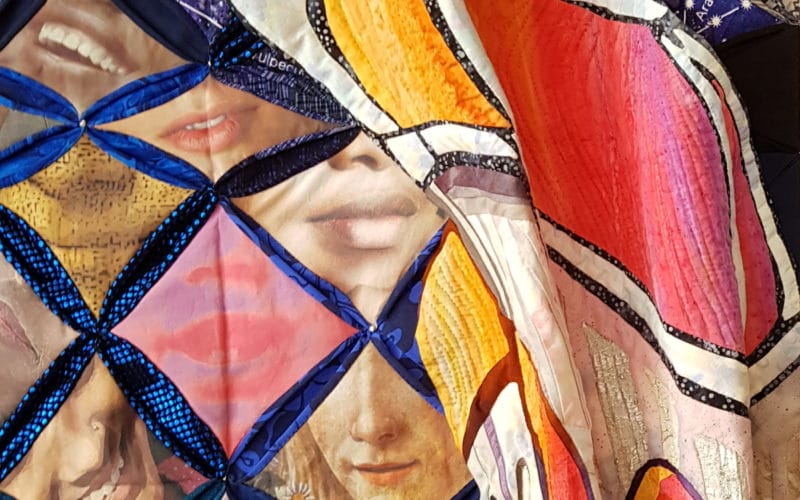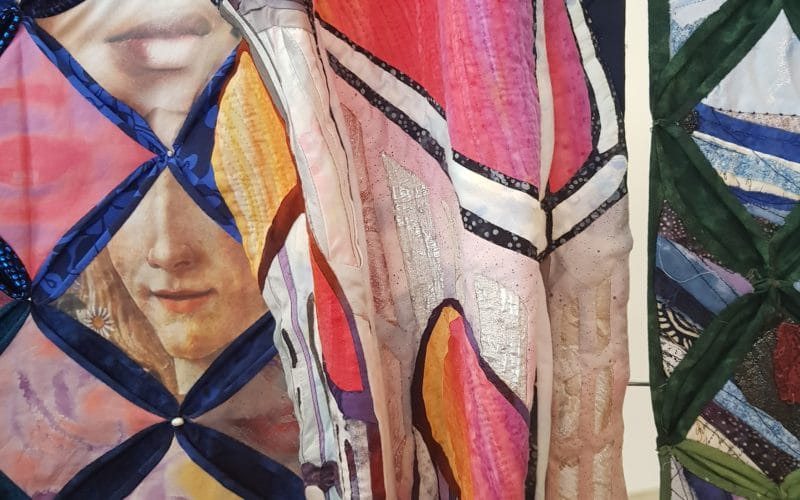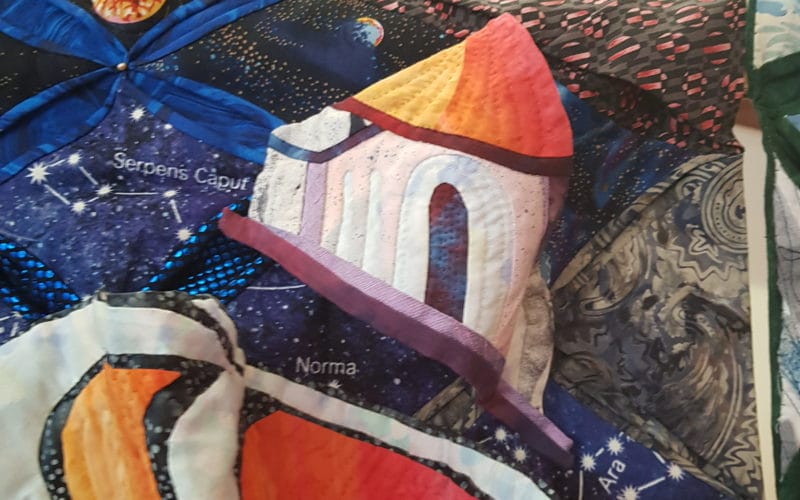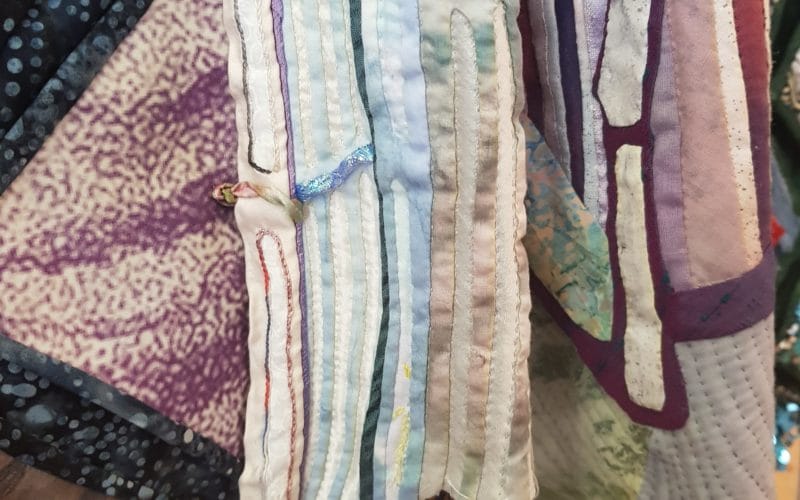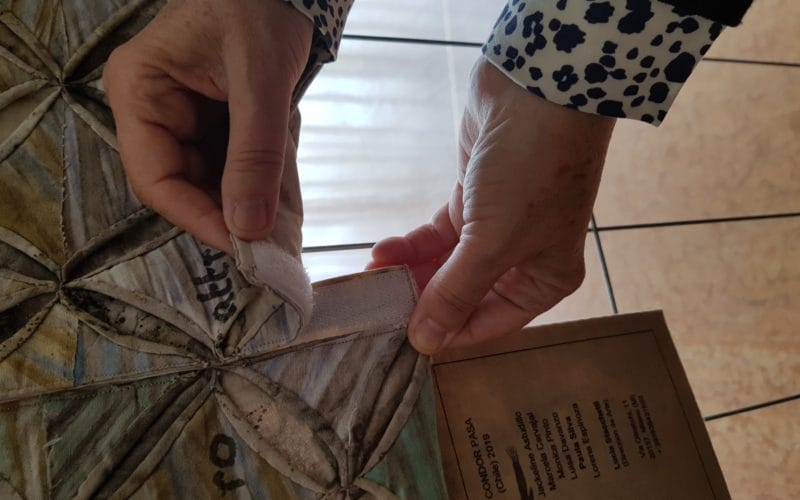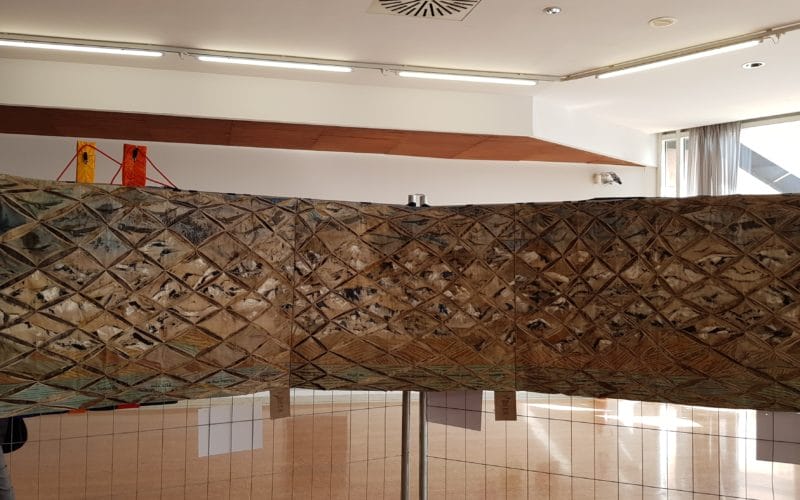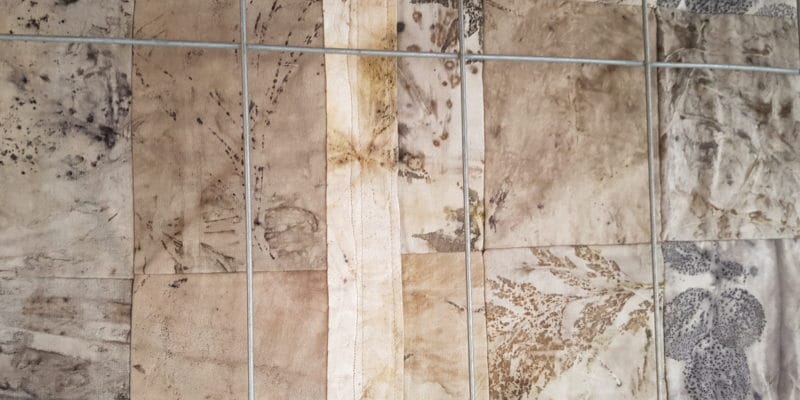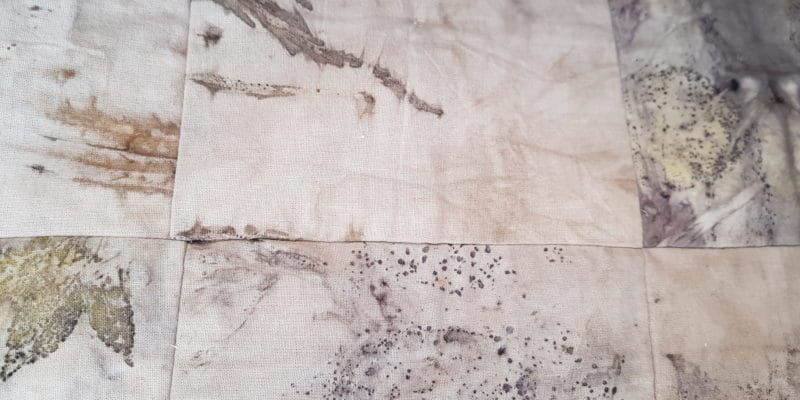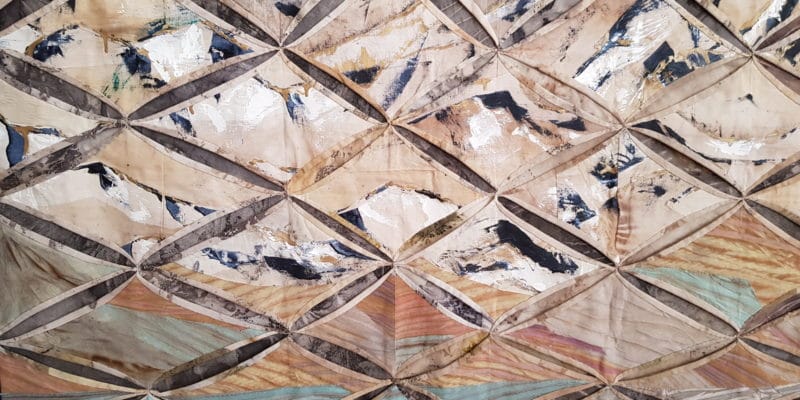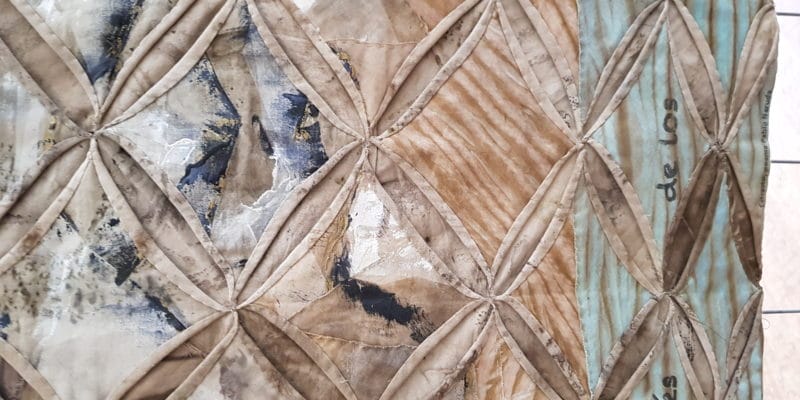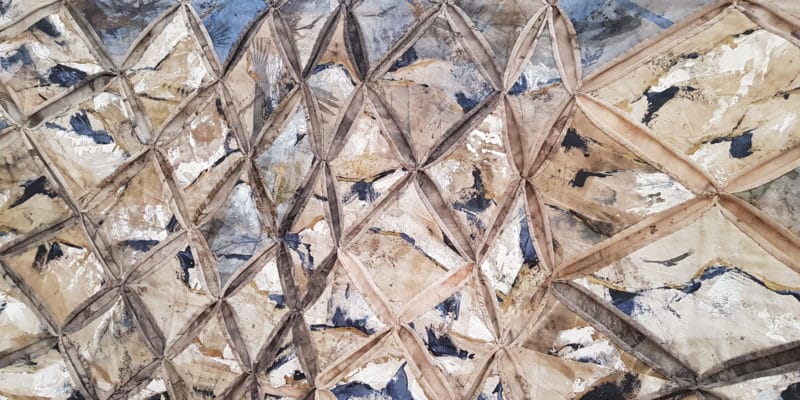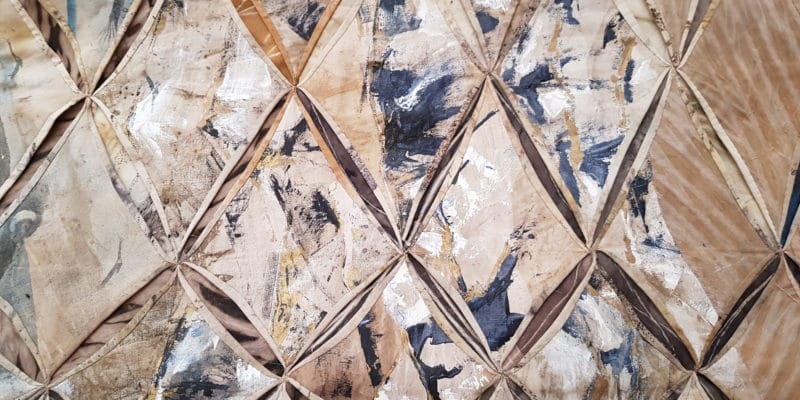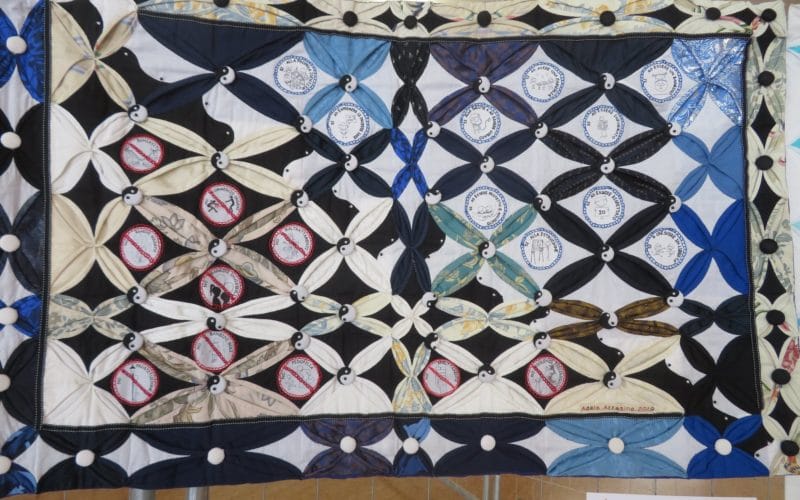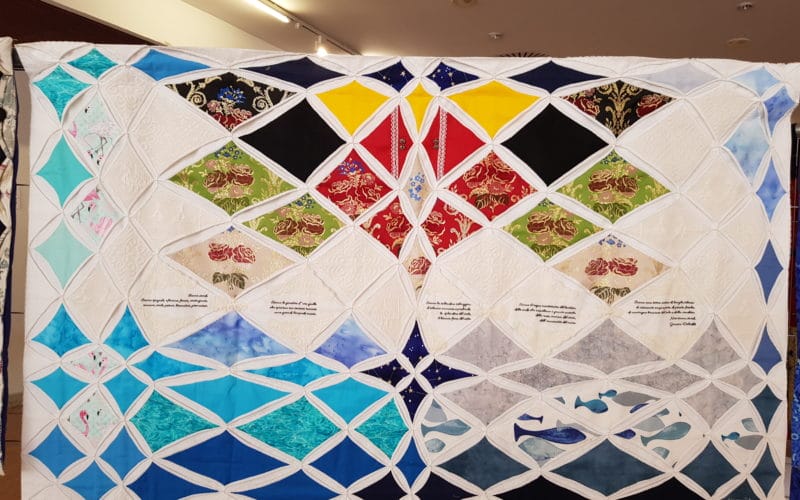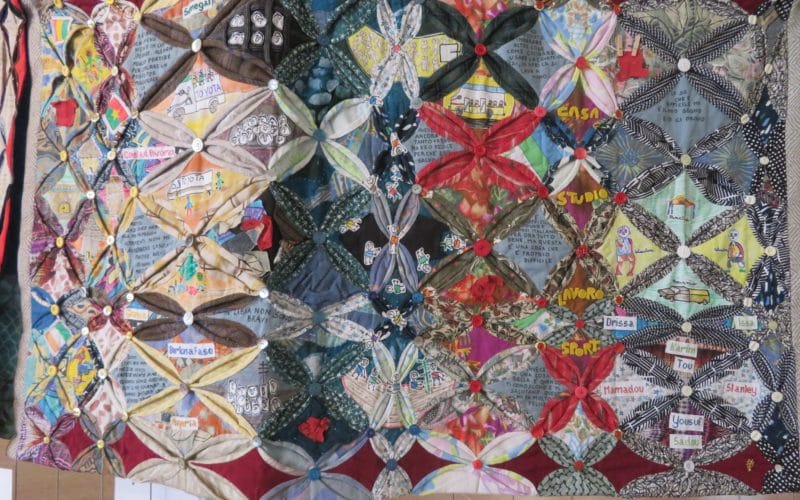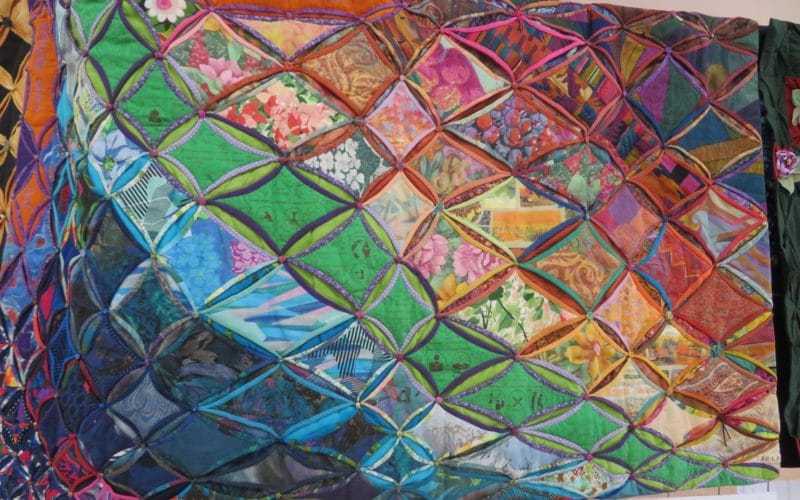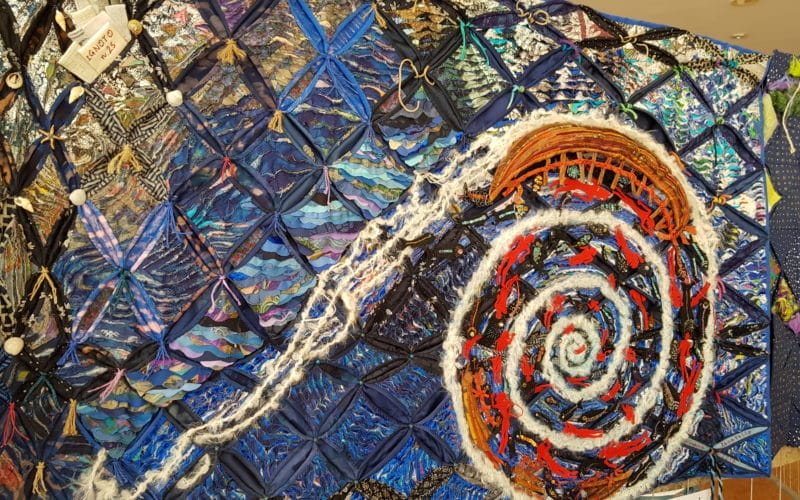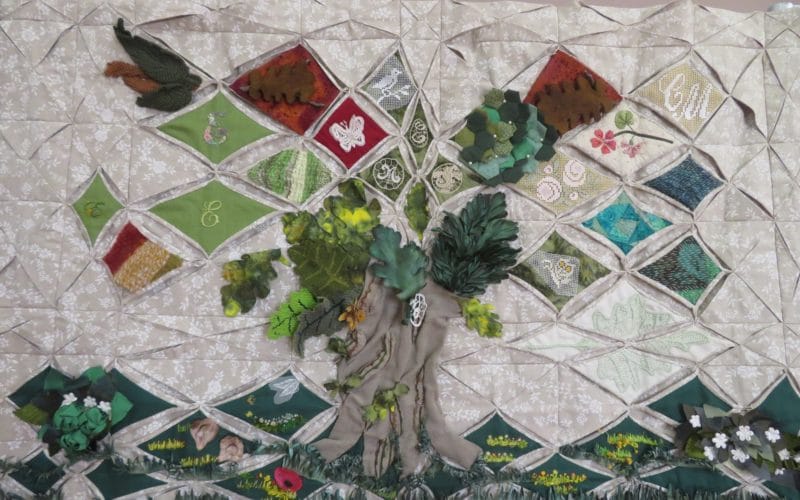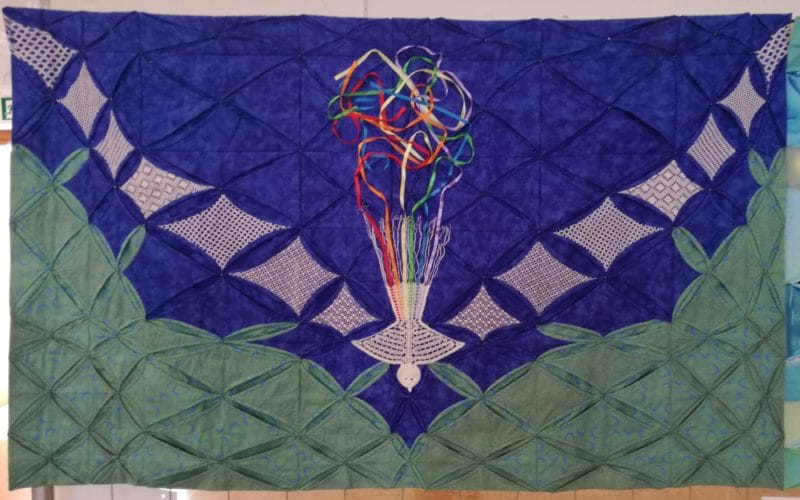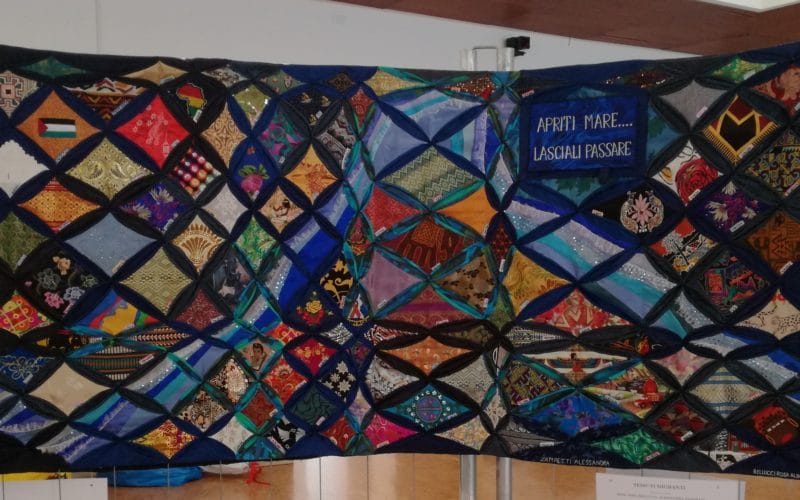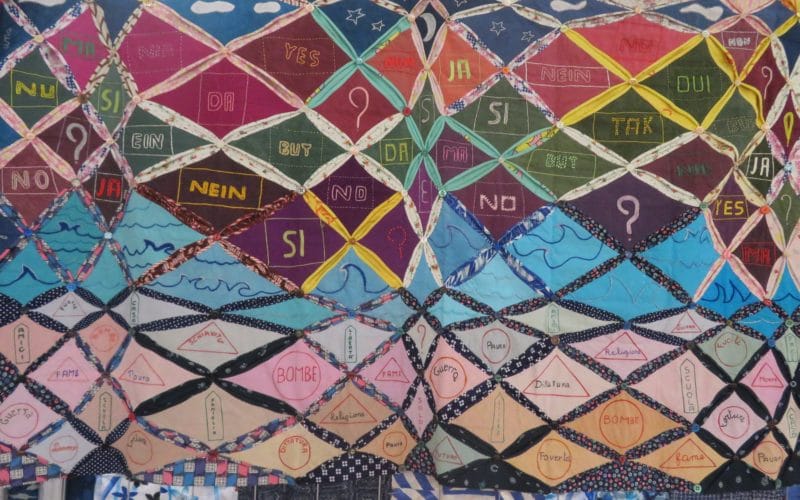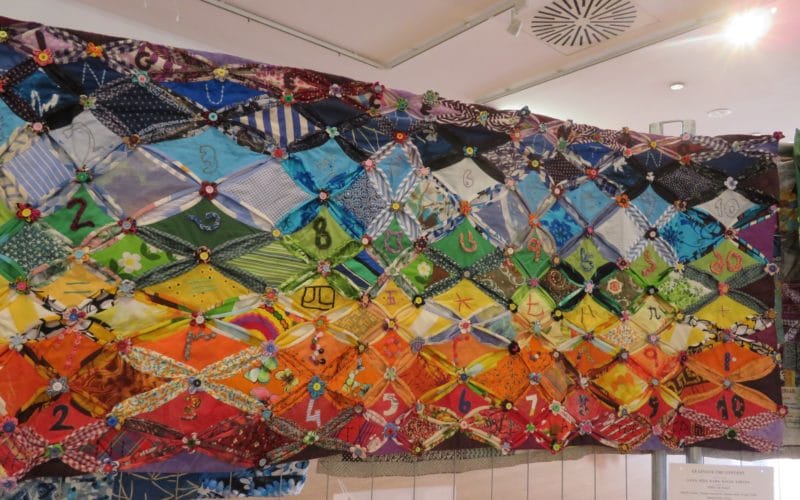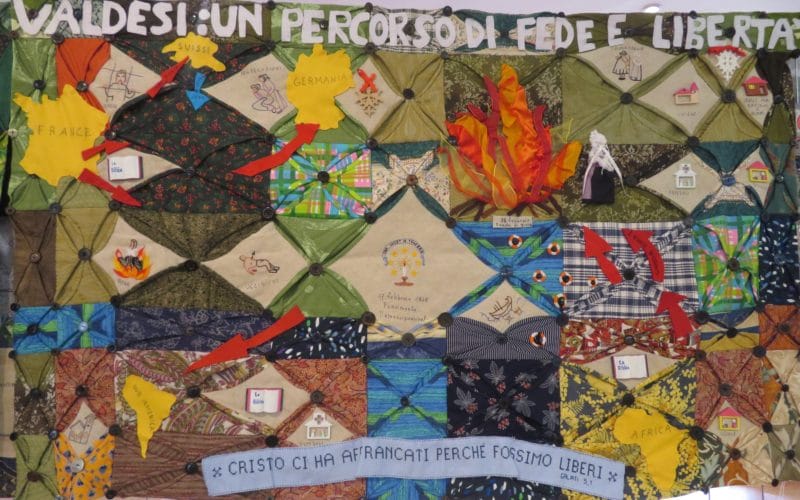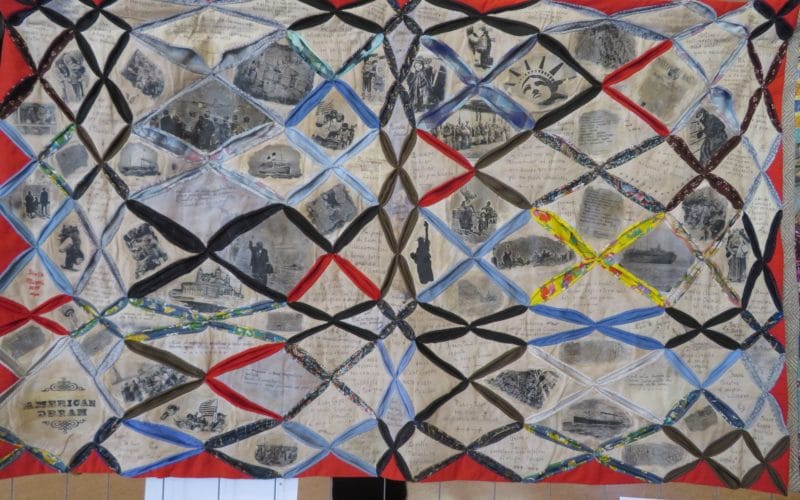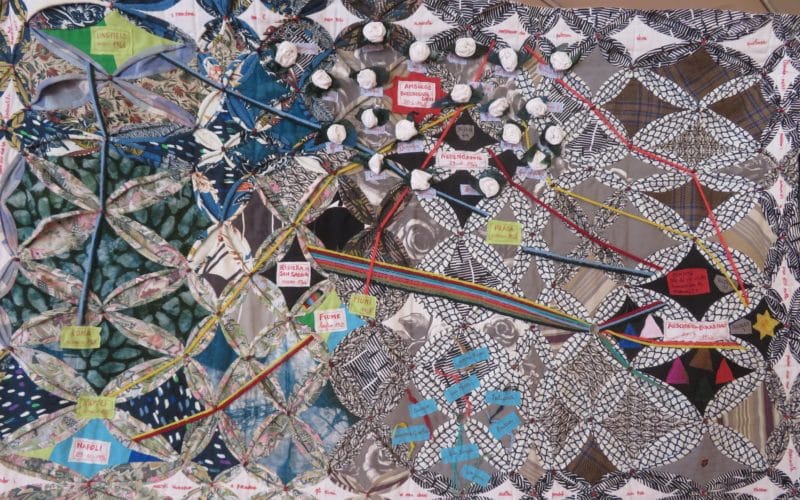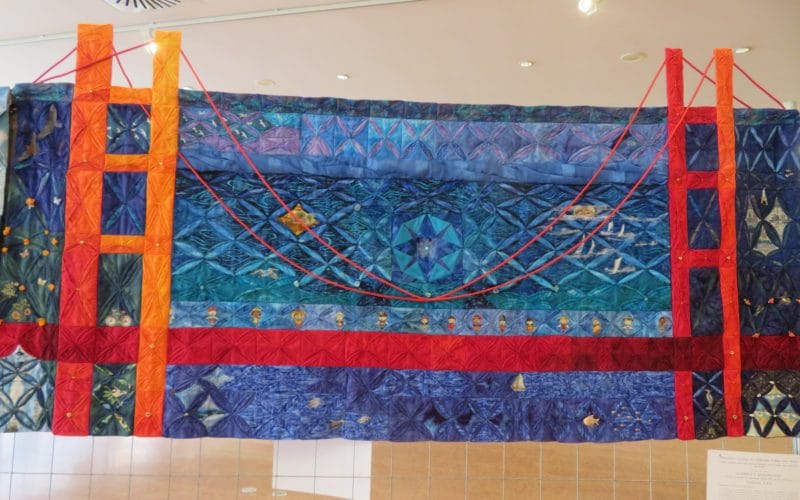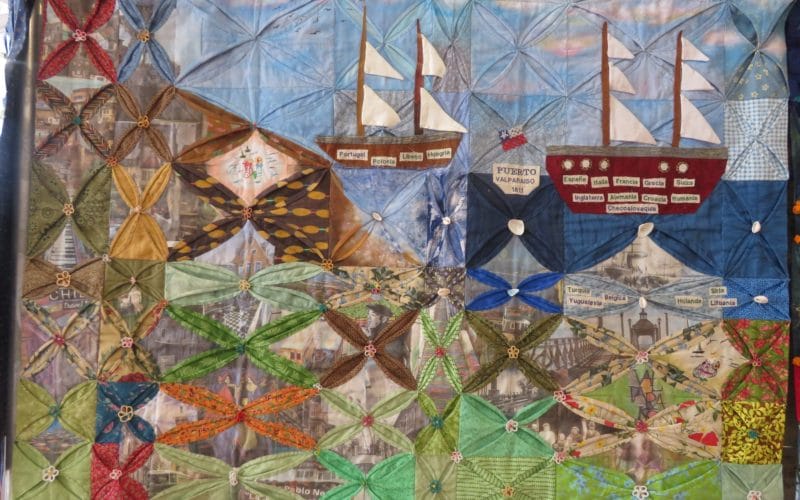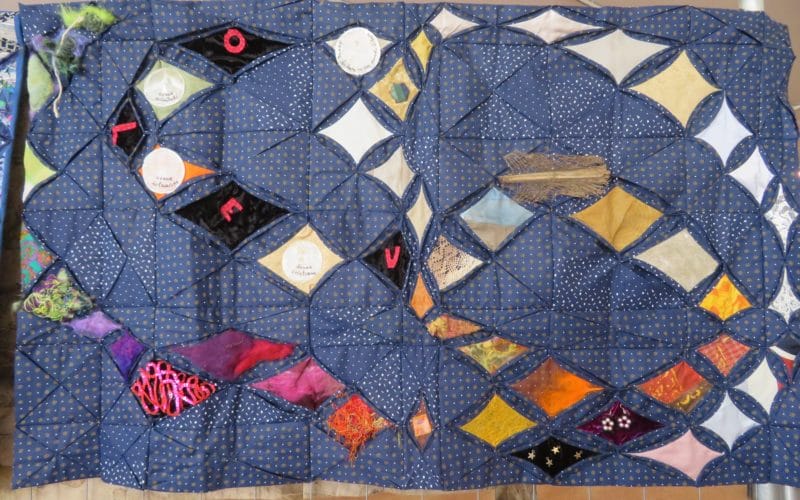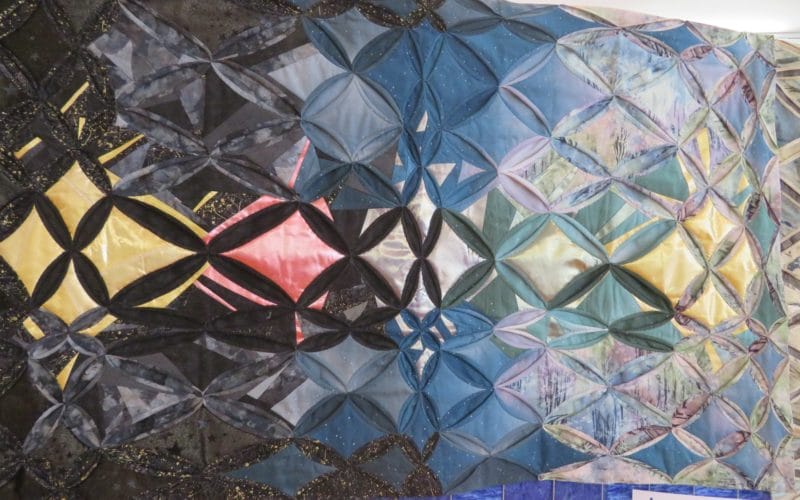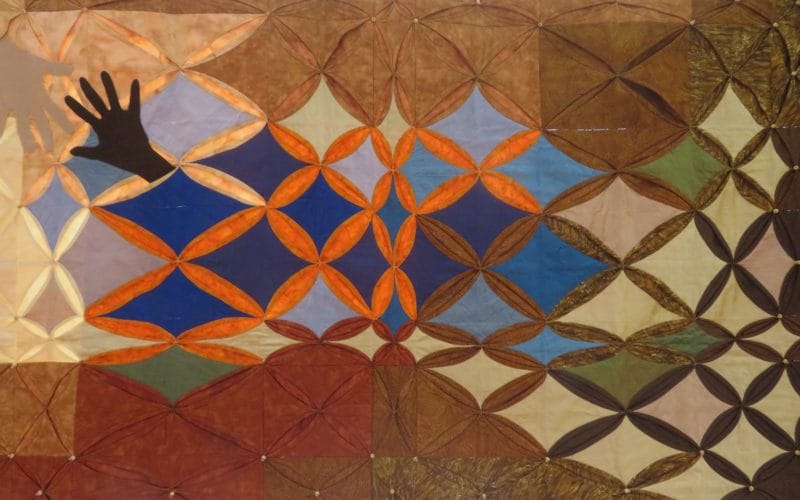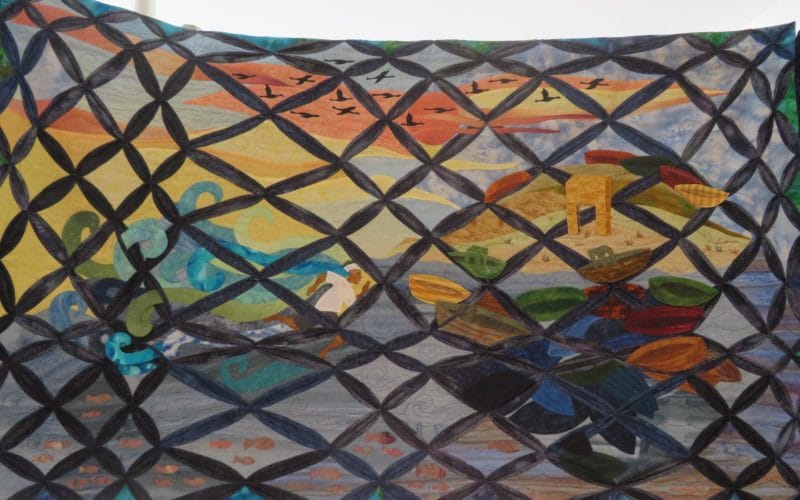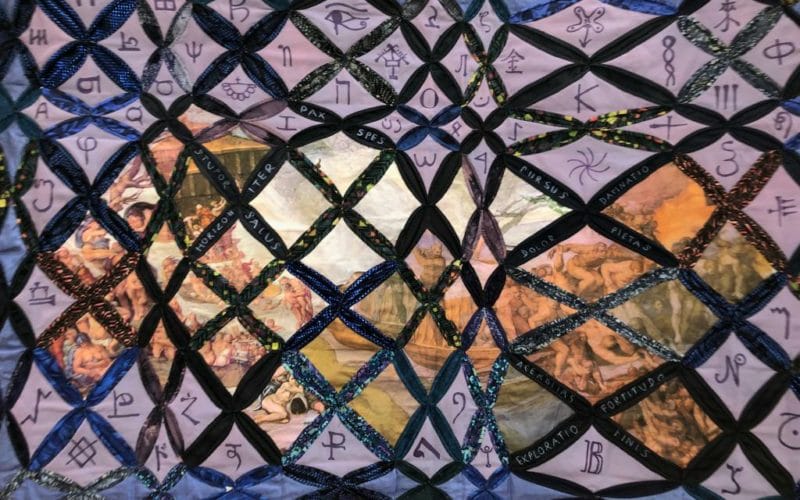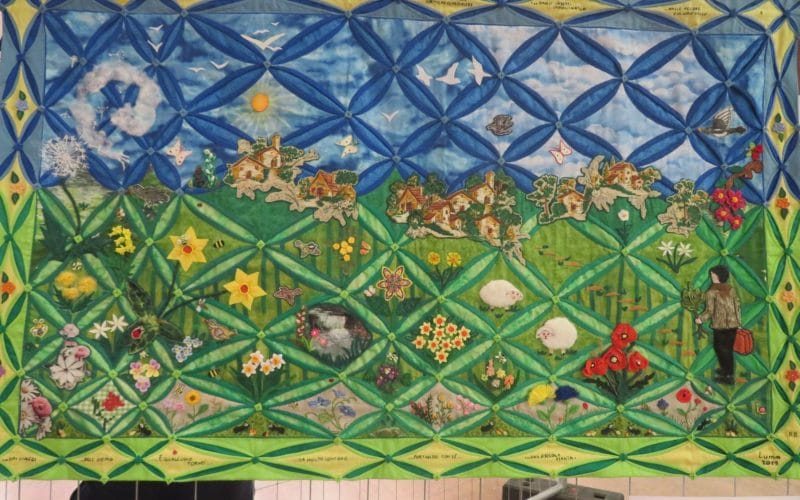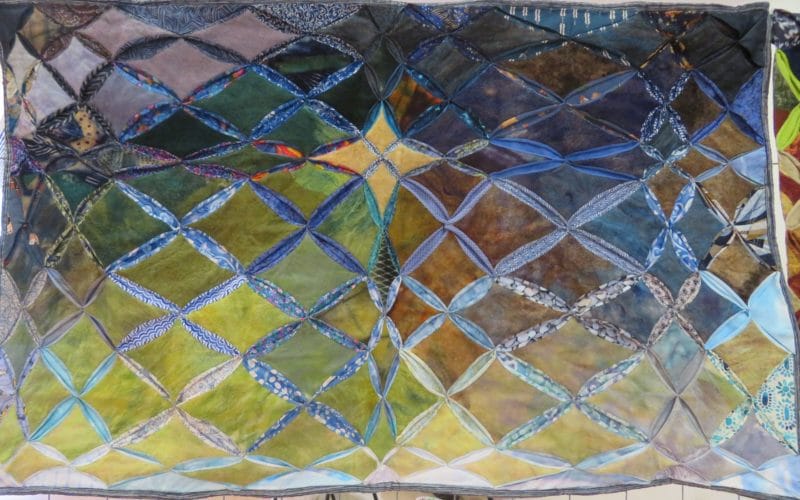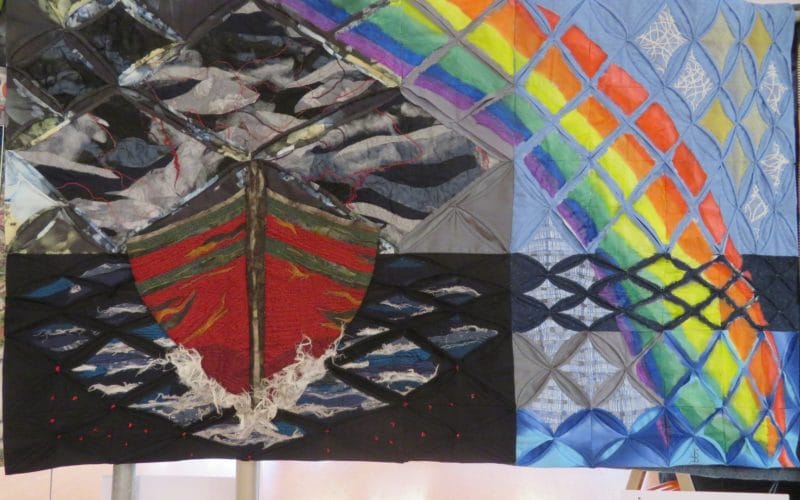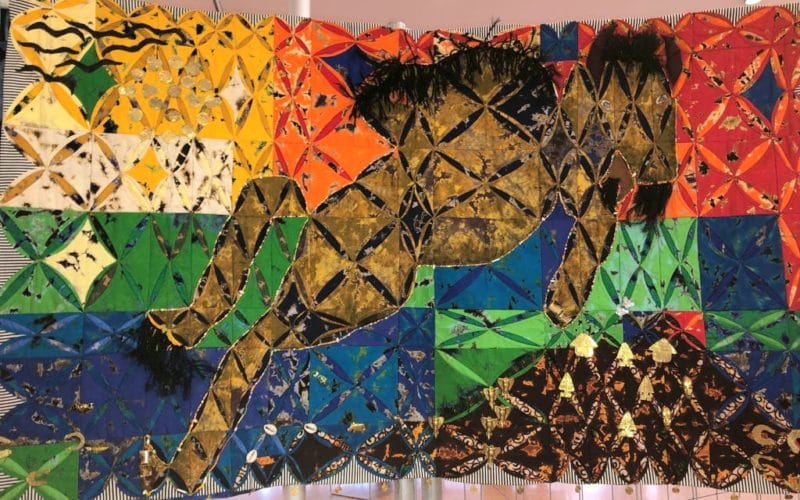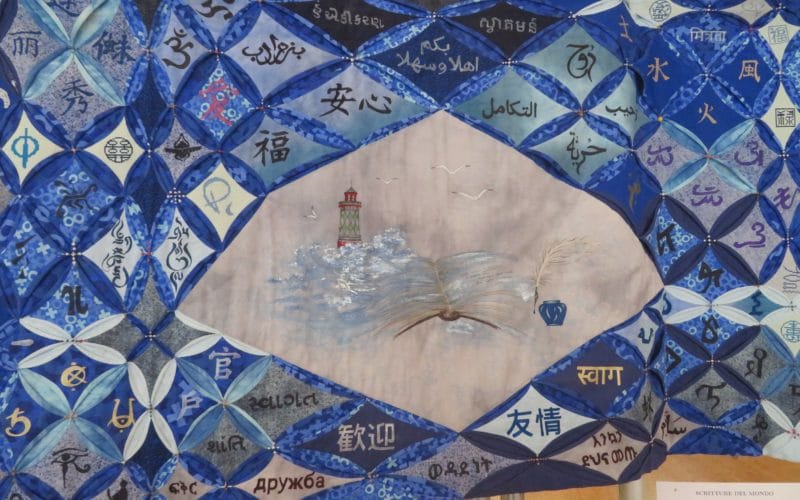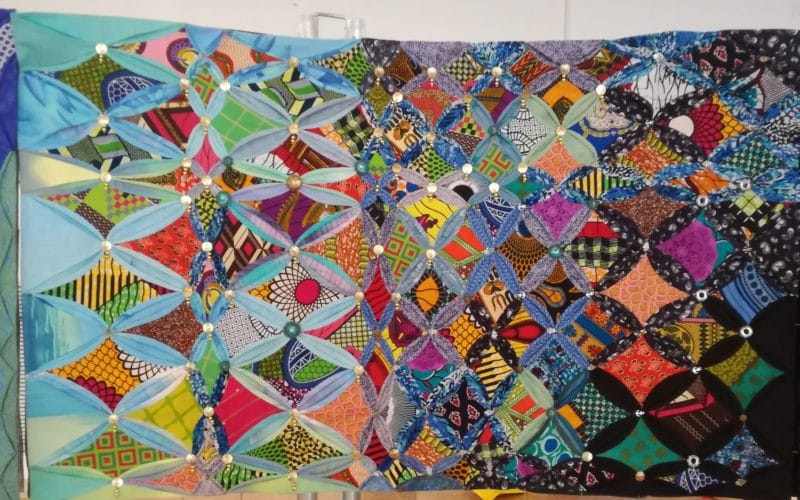Debut of “Finestre Migranti” (Migrating Windows) at Palazzo della Gran Guardia in Verona
AN OPEN PROJECT
Curated by ANNAMARIA BRENTI and SILVANA ZENATELLO
From 25 to 28 April in Verona, at the Palazzo della Gran Guardia, the first exhibition of Migrant Windows was held, almost 80 linear metres of textile works from three continents. There were many and different variations on the theme of migration. The contribution of Silvana Zenatello is fundamental, as in addition to creating more works for the exhibition, she designed the entire exhibition space inside the Multipurpose Hall of the Palazzo della Gran Guardia.
We had talked (HERE) about the project “Migrant Windows”, about how it was born and how it grew up assuming a markedly international character.
We would like to point out that since it is an open project, those who wish to can still join the facebook group “migrant quilts” and download the models and instructions on the website
www.annamariabrentiquiltstudio.com
Many interesting works were exhibited, among the larger works were: “Oltre L’Onda” (Beyond the Wave) by the artist and creator of the project, Annamaria Brenti and the work “El Condor Pasa” by a group of Chilean artists led by the artist and teacher Lucia Stacchetti.
“Oltre L’Onda” Annamaria Brenti
OLTRE L’ONDA
Annamaria Brenti’s quilt “Beyond the Wave” represents, as the title suggests, a great wave, a declared reference to Katsushika Hokusai’s work “The Great Wave of Kanagawa”. In the central part, the image of a Florence coloured in pink as if it were a mirage has been embroidered, a golden city, an ideal destination for those who venture into the sea in search of a new future.
Chain stitch embroideries refer to the stories of migrants and their stories, testimonies collected by the artist and found in literature. The quilt, as well as the entire project of the Migrant Windows, is a work in growth and transformation. Annamaria explains that she will gradually add new embroideries that will tell new tales.
In the center of the quilt, the artist has inserted words of hope (remember, imagine, feel, touch…) inspired by an installation by Yoko Ono in 1994 in which the artist invited to propose these words / symbol in other works to create a language made of new meanings, which leaves room for new keys to understanding reality. Annamaria has created the inscriptions with an old lace scarf of her great-grandmother, the edges of the words deliberately slipped out to indicate the passing of time.
Then, a second stylized wave that becomes a mountain colored in green with the presence of some symbols such as the Bell Tower of Giotto, Cathedral of Santa Maria Del Fiore in Florence, built in three-dimensional form, which turns into a boat, a container ready to receive migrants and leading to an ideal world represented by photographs of smiling faces enclosed in the windows of the cathedral. A meeting between Western culture and art (represented by the references to the smile of Botticelli’s Spring and Mona Lisa) and African cultures, represented by the faces of idols, part of this cultural identity.
In the last portion of the quilt, a new three-dimensional textile element is inserted, the Dome of Brunelleschi of the Duomo of Florence, which moves and leaves space, in a universal gesture of welcome and invitation to all migrant peoples of history, today and forever.
EL CONDOR PASA
El Condor Pasa is a group work based on a project by Lucia Stacchetti (HERE the link to her recent interview for ArteMorbida), developed together with the artists and her students: Jacqueline Astudillo, Marcela Carvajal, Luisa Davanzo, Lorena Espinosa, Monica Pinto, Paula Silva.
This large 7-metre quilt, which took ten months to make, reproduces in colour and shape the geographical characteristics of the Chilean territory, a long and narrow country stretching along the western border of South America, with more than 6,000 km of coastline overlooking the Pacific Ocean and crossed by the Andes Mountains, where the Condor, the official symbol of the country, lives and nests.
Chile is currently experiencing a process of internal migration that is new to its history from populations from Venezuela and other Latin American countries. The natural territory, its colours, the condor, the internal migrations are the fundamental elements that have inspired this project of migrating windows.
The artists started with an entirely white fabric that was dyed with the help of various techniques and the use of natural colors. The fabric, into which various types of leaves have been inserted and pressed, has been tied up and immersed in a container with a natural colour. The result of the process is a neutral colouring with very suggestive printed botanical impressions, which create a rarefied and delicate atmosphere.
The fabric then underwent a second intervention of spatula painting for the representation of the Cordillera of the Andes and the sea was depicted using the Arashi Shibori technique.
Along the entire upper strip of the work is painted, in different sizes, the outline of the Condor that flies over the Andes, with a technique of transfer of the image on fabric by roller.
Collage inserts are finally present in the many cathedral windows that make up the entire artwork.
In the lower part of the quilt, some verses from the poem Canto General poesia IX “Que Despierte el Lenador” by Pablo Neruda in the original version and in the Italian translation, frame and refer to the theme of the artwork.
“Yo también más allá de tus tierras, América,
ando y hago mi casa errante, vuelo, paso,
canto y converso a través de los días”.
“Anche io America molto oltre le tue terre mi reco
e laggiù alzo la mia casa errante, volo, passo,
canto e discorro attraverso i giorni”
